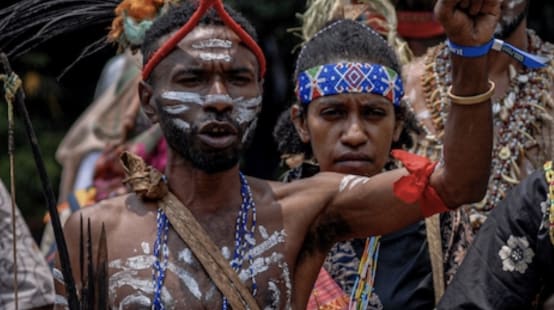Hands off the helmeted hornbill!
 A rare sight: a hornbill in a tree (© Tim Laman)
A rare sight: a hornbill in a tree (© Tim Laman)
The helmeted hornbill is being hunted to extinction: Poachers in Indonesia are killing these majestic birds for the “red ivory” of its beak, which sells for thousands of dollars per kilo in China. Tell Indonesia, Malaysia and China to properly enforce the existing ban on poaching and trafficking and save this unique species.
Call to actionTo: the governments of Indonesia, Malaysia and China
“The hunt for “red ivory” is driving the helmeted hornbill to extinction. Poaching and trafficking need to be tackled effectively NOW.”
The helmeted hornbill (Rhinoplax vigil) has been classified as critically endangered on the IUCN Red List since 2015. The bird, which was once common on Sumatra, has virtually disappeared there, as the IUCN notes.
Helmeted hornbills face a two-pronged threat: poachers and palm oil. Rampant hunting and plantations encroaching on its lowland rainforest habitat are behind the decline.
Poachers hunt the birds for their keratin “casque”, an enlargement of the beak. Unlike other hornbill species, the helmeted hornbill's casque is solid, making it attractive for carvers and particularly valuable for poachers. There is also a market for the bird's feathers.
China is the main destination market for the poached bird parts, where the “red ivory” fetches up to $6,150 per kilo. The bird’s casques have been carved into jewelry, ornaments and belt buckles for centuries. Demand has exploded over the past five years, however.
Currently, poachers are focusing on Indonesia: in the year 2013, an estimated 6,000 helmeted hornbills were killed in West Kalimantan alone. They also target juvenile birds, a practice that has an outsize impact on the population. As soon as the supply from Indonesia dwindles, we can expect the poachers to move on to Malaysia’s forests.
While international trade in hornbill parts has been illegal since 1975, the ban has not helped the birds. Organized crime syndicates operate with impunity and profit handsomely from the trade, which is – in theory, at any rate – punishable by up to five years in prison.
Strict enforcement of the existing laws will be crucial to preventing the helmeted hornbill’s extinction in the very near future.
Please speak out for the helmeted hornbill’s survival by signing our petition.
BackgroundThe helmeted hornbill
Helmeted hornbills are magnificent birds: they stand up to 1.2 meters tall and have a wingspan of up to two meters. The tail feathers reach a length of 50 centimeters. Males can weigh more than three kilograms. The bare, wrinkled throat is a further distinguishing feature.
Around 60 different hornbill species can be found in Asia and Africa. The helmeted hornbill is the only one to have a solid casque – all other hornbill species have hollow ones. The casque is used to dig into loose bark and deadwood in search of insects. Males use their casques as weapons in aerial combat.
Helmeted hornbills, which feed mainly on figs and other fruit, are vital seed dispersers.
Helmeted hornbills seek nesting cavities in tree hollows, with the females spending a full six months in the hollow before emerging with one to two fledglings. During this time they rely entirely on the male for food. The poaching of a male bird may thus mean death by starvation for his life partner and young.
The indigenous Dayak communities on Borneo revere the bird as a messenger of the gods, and killing them is taboo. The bird also graces the coat of arms of the Malaysian state of Sarawak.
Ivory-Like "Helmets" Are Driving These Birds to Extinction
Here is a collection of videos and audio recordings of the helmeted hornbill.
The Environmental Investigation Agency (EIA) has produced an interactive map of illegal trade seizures of helmeted hornbills.
Other sources
EIA: Seeing ‘red’ – the often hidden colour of wildlife contraband
Traffic: Effective enforcement key to survival of Helmeted Hornbill
Traffic: Observations of the helmeted hornbill trade in the Lao PDR
Malay Mail Online: Craze for hornbill ‘ivory’ pushes Borneo icon to the brink
Huffington Post: Helmeted Hornbills on the Verge of Extinction
Jari Bandel: Engaging Gading as a symbol of West Borneo
To: the governments of Indonesia, Malaysia and China
Ladies and Gentlemen,
Your countries bear great responsibility for the survival of the helmeted hornbill (Rhinoplax vigil). The bird has been classified as critically endangered on the IUCN Red List since 2015.
If you do not act, the species will become extinct in the very near future.
Poaching, which has increased dramatically over the past five years, is driving the helmeted hornbill’s alarming decline. The bird’s casque – an extension of its beak – is in great demand as “red ivory”, fetching up to $6,150 per kilo in China. A further factor is habitat loss due to plantations encroaching on its native lowland rainforests.
While international trade in helmeted hornbill parts has been banned since 1975 (CITES Annex I), trafficking is still rampant. Poachers and criminal traders operate with impunity.
To save this majestic bird from extinction, your countries must work together closely. We call on you to intensify your efforts against the poaching and trafficking of helmeted hornbills.
Yours faithfully,













 Recent successes
Recent successes